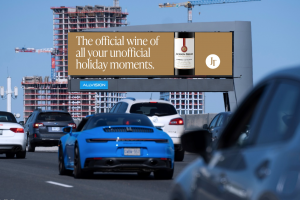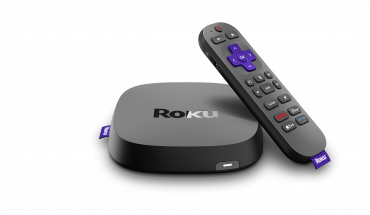
Image courtesy of Vistar Media Canada
Outdoor advertising, in particular Out-of-Home (OOH) and Digital Out-of-Home (DOOH), connects seasonal behaviour with advertising. Its power is that data-driven messaging synchs with Canadian behaviours, including seasonal holidays, vacation desires as well as weather!
What is Out-of-Home advertising?

Scott Mitchell,
Image courtesy of Vistar Media Canada
Managing Director, Vistar Media Canada, explained, “Out-of-Home (OOH) advertising is any form of advertising that reaches people when they’re outside their homes — from traditional billboards and transit shelters to screens in places like malls, grocery stores, or gyms. Digital Out-of-Home (DOOH) takes this a step further by layering in technology: ads that can be dynamic, data-driven, and responsive to context in real time.”
“OOH has been part of Canada’s advertising landscape for decades, but the past 10–15 years have seen significant digital transformation,” elaborated Mitchell. “Brands can now serve different creatives based on the time of day, weather, or even the live score of a hockey game — making the medium far more engaging and measurable than ever before.”
Right message, right place, right time
“One of the real strengths of OOH is that it meets people where they are in their daily routines,” shared Mitchell. “For consumers, that means messages that are relevant, contextual, and often even entertaining — like a highway billboard that acknowledges the traffic you’re stuck in, or a digital screen serving up coffee promos during the morning commute.”
Mitchell further remarked, “For advertisers, the benefit is scale and trust. OOH is a broadcast medium that can’t be skipped or blocked, and with DOOH it’s also highly targetable. It allows brands to reach mass audiences while tailoring messaging in ways that feel personal.”
Getting into metrics, Mitchell said, “We also know it drives action: according to Vistar Media, campaigns that combine OOH and DOOH can achieve conversion rates of 44% with consumers taking measurable action after exposure.”
Mitchell summarized, “… consumers get ads that feel natural and relevant to their environment, and advertisers see stronger engagement and ROI.”
Seasonality Plays a Factor
Advertisers lean into OOH during peak seasonal windows, it appears.
“Seasonality plays a major role because OOH thrives on real-world context,” described Mitchell. “During the holidays, digital out-of-home becomes a powerful way for brands to show up where consumer attention is naturally heightened — from busy shopping districts to transit hubs and entertainment venues.”
Specifically, remarked Mitchell, “Retailers use this time to highlight gift ideas, limited-edition products, and in-store promotions, while home and lifestyle brands tap into themes of celebration and togetherness. Meanwhile, travel and experience brands start planting the seed for post-holiday getaways, and entertainment marketers promote new movie releases and streaming content perfect for cozy nights in.”
Mitchell also stated, “These seasonal moments — holiday shopping, winter travel, New Year’s resolutions — are shared, predictable behaviours that DOOH can uniquely align with. By dynamically tailoring messages to these moments, advertisers can connect with audiences in ways that feel timely, relevant and impactful.”
Weather and Time also drives OOH/DOOH Advertising
“This is where DOOH really shines,” said Mitchell. “Because it’s digital, campaigns can be scheduled or even triggered by real-world conditions. That could mean running sunscreen ads on the first sunny weekend of spring, or hot beverage promotions when the temperature dips. Time of day also plays a role: a food delivery app might advertise at 5 p.m. when people are leaving work, while a rideshare brand might focus on late-night hours.”
Data Reveals Impact
“Sales are certainly one way to measure impact, but DOOH offers a much broader toolkit for measurement,” explained Mitchell. “We can now link exposure to a variety of outcomes — everything from foot traffic into a retail location, to app downloads, website visits, or even brand lift studies.”
Said Mitchell, “… we work with data partners to connect ad exposures to real-world behaviours. That means advertisers can not only build awareness at scale but also track tangible results. For example, we’ve seen campaigns drive double-digit lifts in store visits or online conversions. That level of accountability is what’s driving more brands to shift spend into OOH and DOOH.”
Mitchell summed it up, “The flexibility to align creative with real-world moments makes OOH far more dynamic and impactful than in the past.”
-30-

